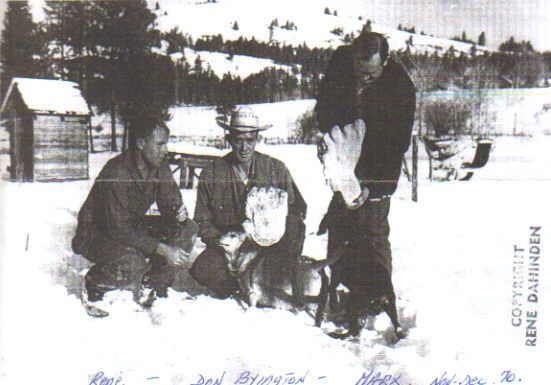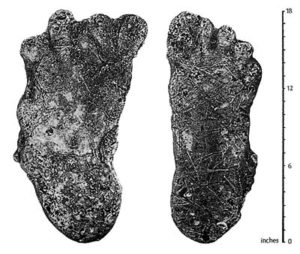
In November, 1969, Colville Washington resident Joe Rhodes reported large Bigfoot tracks at the Bossburg dump, in Steven County Washington. Bossburg is an old mining town, which had a maximum population of 800 residents in 1892. The town was established as a lead and silver mining town and is about 20 miles south of the Canadian border. It has been largely abandoned since the mid 1950s.
Rhodes’ report of tracks, combined with a previous report of a Bigfoot to local police early that year, drew Bigfoot researchers from across the Pacific Northwest to investigate.
Researchers Ivan Marx, Bob Titums, Grover Krantz and René Dahinden all participated an extensive search of the area. On December 13, 1969, Marx and Dahinden found, photographed, and cast some of 1089 Bigfoot tracks in snow and mud near Lake Roosevelt, outside Bossburg. Soon after the tracks were found, Roger Patterson and Dennis Jenson also were on sight taking part of the casting and photography of the tracks.
Adding the to memorable all-star team investigating, the Bossburg Tracks of 1969 also included a series of tracks which included a consistent deformity to the ‘right’ foot of the Bigfoot. In these tracks, the left foot measured 17 1/2 inches long, while the right foot was smaller with several lumps, as well as oddly shaped toes. This oddly shaped right foot led to the creature/tracks being called “Cripplefoot”.
Several hoaxes quickly followed the December 13th tracks and attention the remote area was suddenly getting, including fake film footage, a local prospector claiming to have a Bigfoot trapped in a nearby mine, and a man named Joe Metlow claiming to have a Bigfoot foot in his freezer.
The photographs and casts collected near Bossburg have been extensively studied. Anthropologist Dr. John Napier, former Curator of Primates at the Smithsonian and anthropologist Jeff Meldrum both found no evidence the prints found in November and January were faked.
